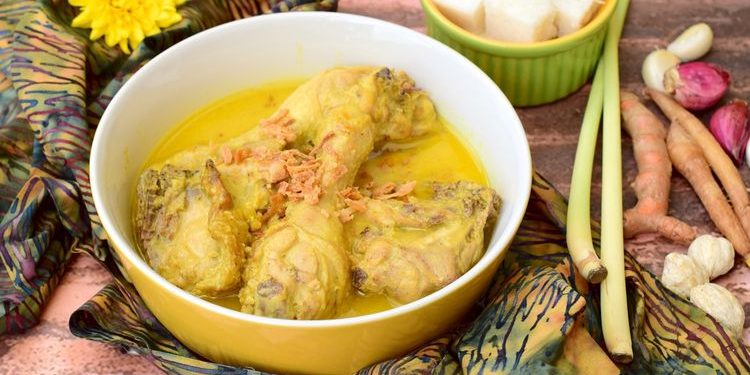The urge to buy was irresistible. The incident was a typical everyday reminder of the power of smell : without seeing or tasting a food, our noses are quite capable of telling us that we should be craving it.
Since aromas are so integral to whetting the appetite, it’s so wonder that deliciously fragrant spices are so important to Indonesia’s traditional cuisines. The aromatic spices used differ from province to province and city to city, even when the main ingredients of a dish remain the same. Let me take you on a short culinary trip across the Indonesian archipelago by way of some of our favourite ayam (chicken) dishes, prepared using a variety of different aromatic key ingredients that will truly rock the palate !
Manado, located in North Sulawesi, is known for its succulent, chili-hot taste sensations. Ayam rica-rica is a favorite dish. In the Manadonese language, the word rica means ‘chili or spicy taste’, so ayam rica-rica is a chili-hot chicken dish. It will tease your taste buds with its combination of sweet and spicy, the hint of sweetness comes from Indonesian sweet soy sauce or granulated sugar, while long red chilies contribute the heat. Fragrant lemon basil leaves, known locally as kemangi, are added at the end of cooking for extra flavor. The relaxing effect of lemon basil is believed to balance the intensity of the spiciness. Perfect !!!
On the Island of the Gods, ayam betutu is the speciality that you must try (betutu means ‘roasted’). Normally served during religious and traditional ceremonies, the legendary ayam betutu it so popular that it is also a star turn in hotels and restaurants. However, cooking the favourite dish of Gilimanuk and Gianyar, Bali is not so simple. Achieving the district smell and flavour of ayam betutu requires around 30 ingredients and multiple cooking steps, before the chef can place the banana-leaf-wrapped chicken over a slow charcoal fire.
Base genep (complete seasoning) and bumbu wewangenan (Balinese aromatic spices) are important ingredients for betutu chicken. Bumbu Wewangenan consists of black pepper, white pepper, cloves, candlenuts, tabia bun (Balinese long peppers), coriander, nutmeg, jangu (calamus root), bangle (cassumunar ginger or plai in Thailand), kaffir lime peel and kemenya (benzoin resin).
In contrast to the kemenyan used for religious rituals and offering, the benzoin resin for cooking has a rougher texture, and only quarter of a teaspoon is used. In Balinese traditional market, wewangenan spices are normally sound unground. The spices add a heady pungent mix and savoury flavour.
Aceh, which is located at the northern tip of Sumatra, also has a spicy menu made from chicken, known as ayam tangkap. Tangkap means to “catch” which refers to the activity of catching the chicken alive before it is cut for cooking. Curry leaves are also known as temuru leaves or koja bay leaves and pandan leaves are essential ingredients for this delicious menu. Some cooks use as many as 40 curry leaves in order to prepare one whole chicken, which is presented under a covering of fried, crispy leaves.
But for those of you who like a sweet taste, opor ayam, a special dish from Yogyakarta, Central Java, is another delicious menu alternative. Javanese people are known for their sweet recipes, which typically use palm sugar and coconut milk. Indonesian bay leaves, lemongrass and kaffir lime leaves are deliberately added to dishes to create a delicious aroma, as well as add flavor. In Yogya, opor ayam is usually served with a side dish of gudeg, made from young green jackfruit simmered in coconut milk and palm sugar (it’s interesting to note that Yogyakarta’s speciality guded is now available canned)
Good food thankfully does not recognise borders. Herb and spices that only grow in one part of the world can now easily be accessed anywhere. Wherever you are, give these dishes a try. You will love the aromas and flavours !!!



